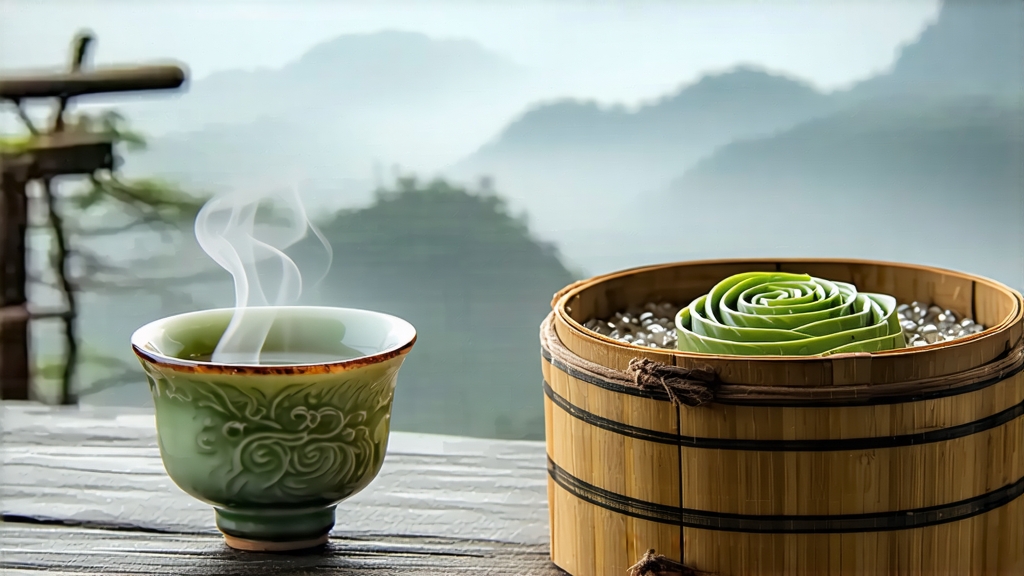
Tucked between the mist-laden slopes of Dongting Mountain and the vast mirror of Taihu Lake in Jiangsu Province, Biluochun—literally “Green Snail Spring”—has captivated emperors, poets, and modern connoisseurs for more than a thousand years. What began as a wild tea picked by Buddhist nuns in the Tang dynasty evolved into an imperial tribute during the Kangxi reign of the Qing, when the emperor declared its curled, jade-green leaves “as delicate as snail meat and as fragrant as spring itself.” Today it is listed among China’s Ten Famous Teas, yet outside the Middle Kingdom it remains an undiscovered jewel, often overshadowed by Dragon Well or Longjing. This article invites the global reader to journey through Biluochun’s micro-history, micro-terroir, and micro-craft, then learn how to unlock its orchid-and-apricot perfume in a single teacup.
-
Terroir and Micro-climate
Dongting Mountain is actually two islands—East and West—rising from the floodplain of the Yangtze Delta. The lake’s water stores daytime heat and releases it as night-time mist, creating a natural shade-cloth that slows photosynthesis and concentrates amino acids, especially L-theanine. Soils are quartz-sandstone mixed with river-laid loam, slightly acidic (pH 5.0–5.5) and rich in selenium. The result is a tea that is sweet rather than astringent, with a velvety mouthfeel reminiscent of white peaches. -
Cultivars and Grades
Although the original bush is a seed-propagated landrace known as “Xiao Ye” (small-leaf), clonal selections such as Dongting #1 and #7 have been released since the 1980s to intensify aroma. Chinese national standards divide Biluochun into five grades: Supreme, Special, First, Second, and Third. Supreme grade must contain 90 % single buds and be picked within the first five days after Qingming festival; Third grade allows one bud and two leaves harvested until early May. A 100 g tin of Supreme can command over USD 800 at spring auction, yet the same tea sold in Suzhou’s old-town markets costs one-tenth that price—proof that provenance and branding matter as much as leaf quality. -
The Craft of Curling
Picking begins at dawn when dew still beads the buds, keeping cell walls brittle and preventing premature oxidation. Leaves are spread in bamboo trays for two hours of withering, then pan-fired at 180 °C for precisely 3.5 minutes to kill green enzymes. While still hot, the master rolls the leaf against the scorching iron surface using a feather-light spiral motion—thumb and index finger describing tiny “O’s” that coax the bud to curl like a snail shell. This shaping phase lasts 15 minutes and demands muscle memory passed from parent to child; too much pressure bruises the leaf, too little and the spiral unfurls during shipping. Finally, a gentle re-firing at 80 °C reduces moisture to 5 % and locks in the signature white down that glints like frost under light. -
Chemical Signature
Gas-chromatography studies at Zhejiang University identify 46 volatile compounds, dominated by geraniol, β-ionone, and hotrienol—molecules shared with lychee and passionfruit. The downy trichomes themselves contain 20 % bound aroma precursors; when submerged in 70 °C water these hairs rupture, releasing a fragrance so intense that locals joke “three meters of alley, ten meters of aroma.” Caffeine averages 3.2 %, lower than Indian Assam but higher than Japanese gyokuro, giving a gentle lift without jitters. -
Brewing Ritual for the International Kitchen
You do not need a Yixing clay pot or a bamboo tea boat. A simple 250 ml glass pitcher and a digital kettle suffice.
Step 1: Pre-warm the glass with 80 °C water, then discard.
Step 2: Measure 3 g of tea—about one level teaspoon of Supreme grade. Let the buds fall freely; their weight and shape already tell a story.
Step 3: Pour 70 °C water along the wall to avoid scorching the down. The first infusion lasts 45 seconds; watch the spirals unfurl